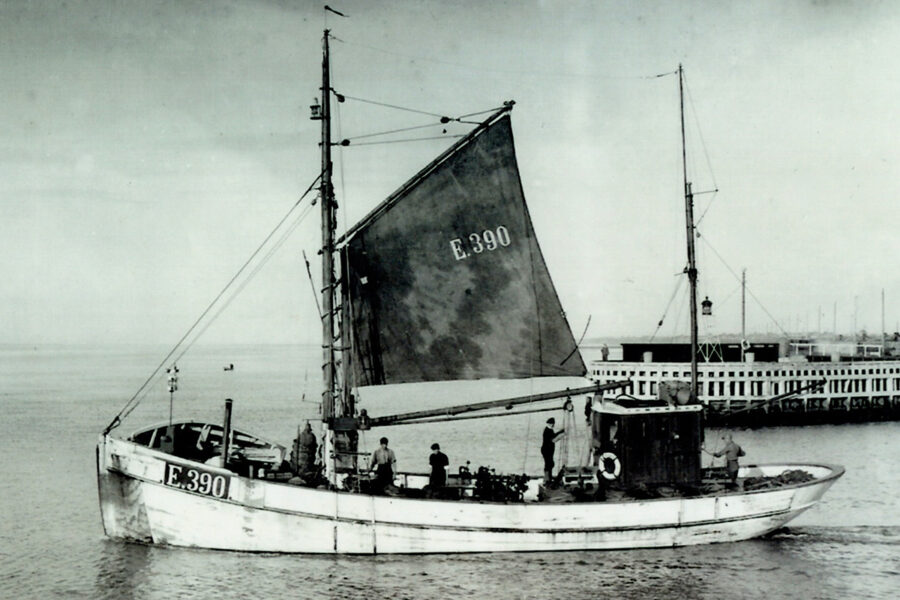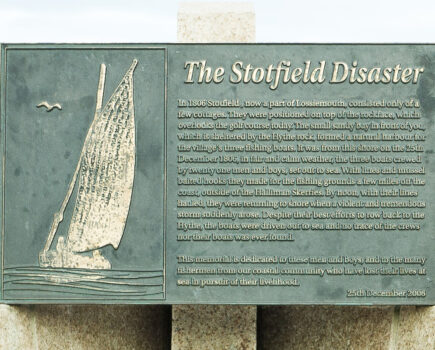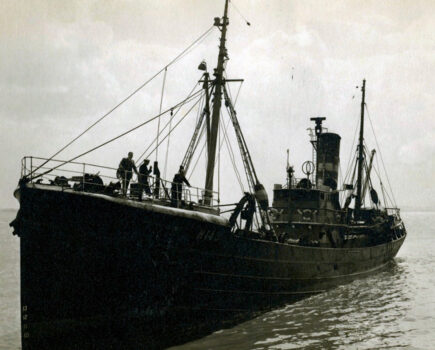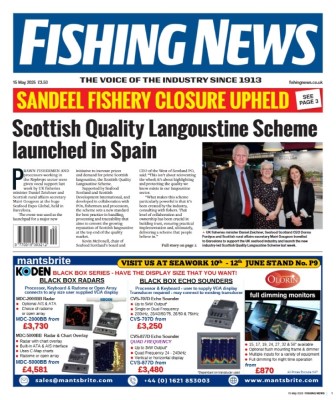Built in Denmark as Anne Scott GY 150, Thom Ryan RY 170 is an oak on oak stalwart now fishing from the Isle of Man.
By Mike Smylie
Back in about 1985, I travelled by road through Denmark to get to Sweden by ferry (there was no bridge then), en route to Finland. A convoluted way of getting there, some will say, but it gave me the opportunity to poke about some of the Danish harbours.
At that time the Danes were still selling off the old round-stern sailing ‘kotters’, as some called them – oak on oak, solidly built sailing fishing boats adapted for the Danish anchor seine. According to one boatbuilder friend, the owners were offering ‘buy one, get one free’, they were so desperate to be shot of them. Some survived to be sailing today under private ownership, and are indeed lovely vessels.
Of course it was the motor ‘logger’ – or ‘shark cutter’, as it was called – that killed the old sailing boats off. These, first introduced in 1904, were a sort of infill before the Danish-type cruiser-sterned vessels appeared in the decade before the Second World War. These were the vessels used to ferry escapees over to Britain after the Germans invaded Denmark in April 1940. Norway was invaded at the same time, and the Shetland Bus link developed soon after, using the same type of vessel.
Hundreds of these motorised vessels were built – probably thousands, if you take into account that throughout the Baltic they were adopting a very similar design. Right from Norway along the coasts of East Germany, Poland, the Baltic States and up to Finland, these vessels were very rounded in their cruiser stern, with the curved stempost. I’m not sure who first termed them ‘snibbies’, but they did look somewhat ‘snibbed’ in comparison to the Scottish motorised fishing vessel.
They were found to be effective at the Danish seine, which the Scots and English had begun to copy in the 1920s, developing the fly-dragging method – so snibbies were bought in from the various shipyards in Denmark for the British fleet, primarily in Grimsby.
Back to 1985, and I remember being in Grenaa, catching the ferry across to Halmstad in Sweden. The harbour was full of the blue-painted vessels, all the same shade – almost a cornflower blue. Many had single-cylinder engines, and you could hear them chugging away with that slow heartbeat.

One such vessel was the Anne Scott, built by Lynæs Bådeværft/Viggo Schnack in Lynæs, Sjælland in Denmark in 1968/9 as a seiner. She was first registered as GY 150 by Allard Hewson & Co Ltd of Grimsby. She had been brought across the North Sea when new by Willy Thomsen, helped by Gunnar (Tommy Steel) Hansen. She was named after the daughter of her first owners, Mr and Mrs JR Scott. Jonny Stringer became mate, and then skipper when Willy got hold of the Rasmine GY 293, which was also built in Denmark, in 1973.
Anne Scott was typical of the Danish ‘snibby’ design: 59ft by 18ft, with a 196hp Hundested engine. By 1978 her registered owners were Derek Allard and Ingrams (Grimsby) Ltd, and by 1991 she was registered to the Jubilee Fishing Company Ltd of Grimsby as agent, and owned by the Bekimael Fishing Co. The Bekimael GY 209 was built at the same yard in 1972.
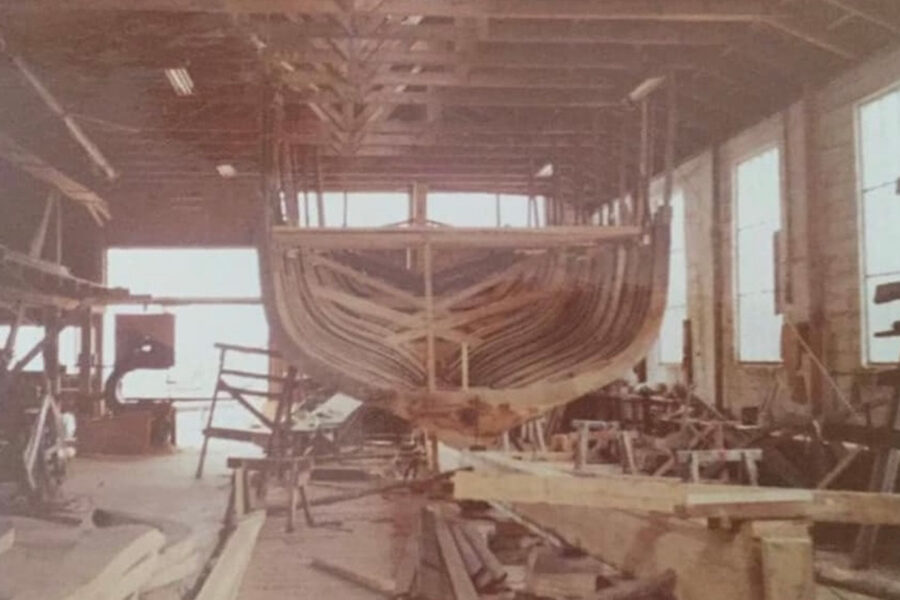
She was skippered for a few years by Pauli Terkildsen, originally from Esbjerg. Pauli had been in the Danish navy until he arrived in Grimsby in 1965 to work in the fishing. In time he obtained British citizenship and married his wife Pauline in Grimsby.
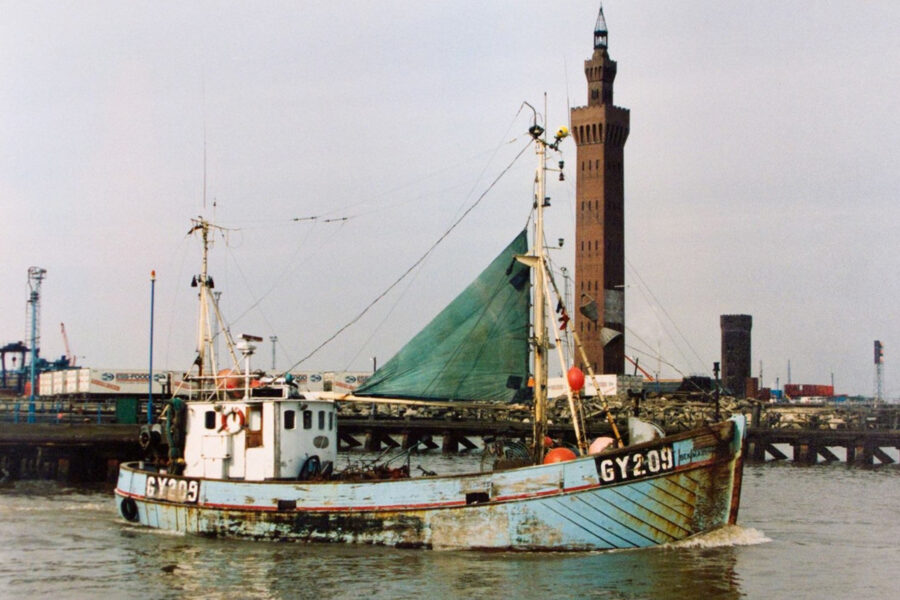
Before skippering the Anne Scott, he’d been running the Pacemaker GY 165, and the Mary Ronn GY 1382 (later BCK 168) before that. He worked the Anne Scott from the late 1980s up to about April 1996, when he retired through ill-health. His daughter Lise remembers that he wanted to buy the vessel, but her mum put her foot down – probably because she saw the fishing declining at the time.
Lise told me: “He earned a lot of money from the Anne Scott, and he was quite often top skipper. He was always proud to bring the silver cup home. Lots of ex-fishermen tell me he was an excellent skipper!”
Various posts on Facebook confirm this. “An exceptional skipper,” one person wrote. Another recalled the time he was aboard the Mary Ronn in the 1970s, saying that Skipper Terkildsen was a bit of a tyrant and would not put up with insubordination. But with that came success, and it was the nature of the job 50 years ago! As to the vessel itself, one comment was that she was a ‘brilliant sea ship’ but rolled like a barrel.
About 1990, the Hundested engine was removed and replaced with the 230hp Gardner that the vessel has today. At some point, the extended shelterdeck was added at Grimsby. It seems, from various quotes, that she was a good earner at the seine.
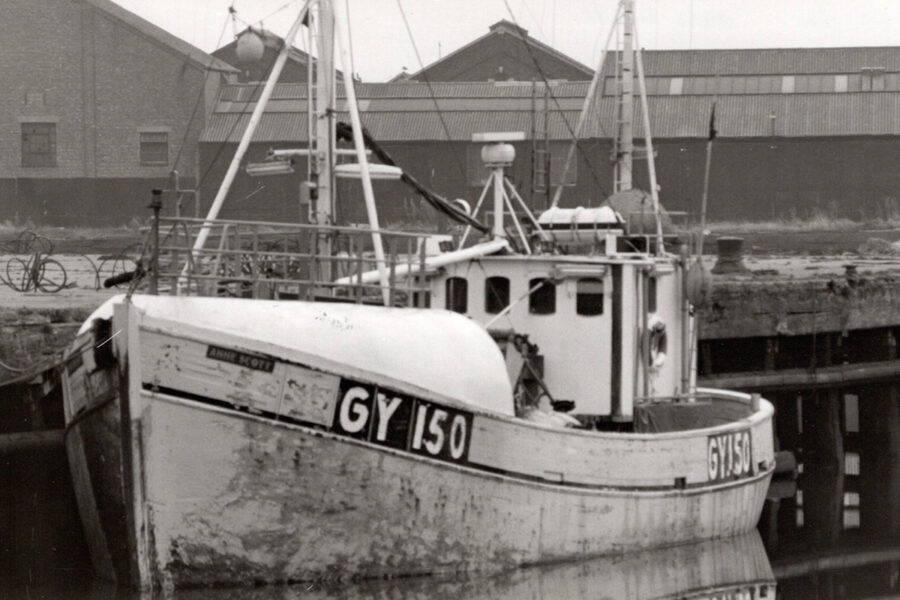
About 2006, the Anne Scott was sold to Major Hartley of Hartlepool, who fished for prawns. By 2012 she was working intermittently as a guard vessel out of Hartlepool, keeping watch over the pipelines from the oilrigs.
In late 2014, the vessel was sold to James Moore of Ramsey and taken to the Isle of Man. There he removed the shelterdeck and forward mast, and rigged her for scallops and queenies. The vessel was renamed Thom Ryan after his two sons and re-registered as RY 170. She is certainly unique, as I’m pretty sure she’s the only Danish-built vessel at the clams.
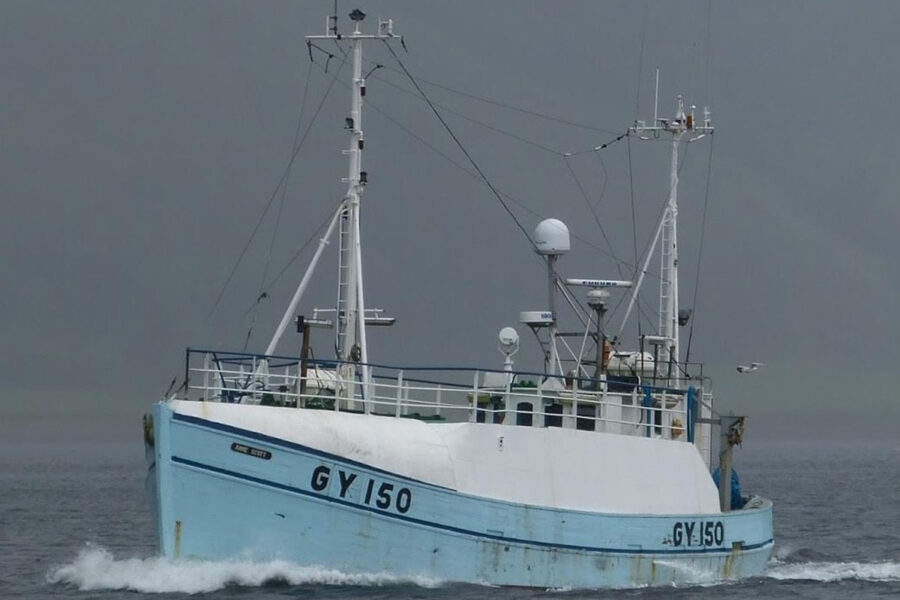
James told me: “She is heavily built, with big frames. She’s a good boat. Rolls like a pig regardless of the weather, but is safe at sea. The only trouble is that the Gardner is a bit underpowered for scallops. We have six dredges a side and, because she’s only ever seine- netted and trawled for prawns, she now needs a bit more horsepower.
“The price of licences over here on the island leaves us restricted, so I might have to put the licence on another boat with more power. We’ll see. Another thing is that there are no decent shipwrights here on the island, which makes wooden boats hard with their upkeep. There’s one Irish fellow who will come over, but really we need a couple of them here all the time.” This was not the first time I’d heard this said!
James works her with two crew, though she can have three. Accommodation is forward
in true Danish fashion. And although he says he might have to take the licence off rather than upgrading the engine, it seems there’s plenty of life left in her solid oak hull.
This story was taken from the August 2024 issue Fishing News. For more like this, subscribe to Fishing News here or buy the latest single issue for just £3.50 here.
Sign up to Fishing News’ FREE e-newsletter here.

